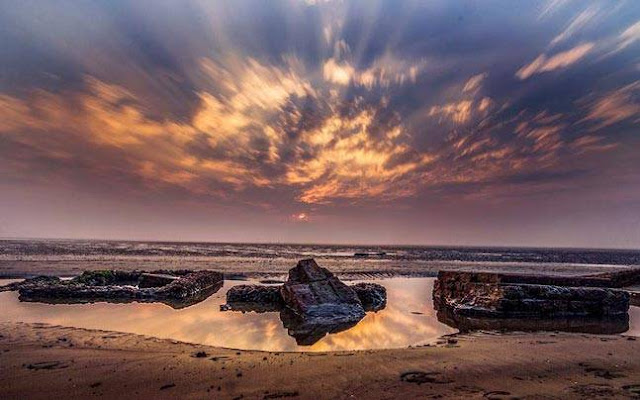Aogashima is a volcanic Japanese island in the Philippine
Sea, administered by Tokyo. The island's area is 8.75 km2 and, its population
is about 200. Aogashima is a volcanic
island 3.5 km in length with a maximum width of 2.5 km. Aogashima is also
within the boundaries of the Fuji-Hakone-Izu National Park. Aogashima is
approximately 358 kilometres south of Tokyo and 64 KM south of Hachijō-jima. It
is the southernmost and most isolated inhabited island of the Izu archipelago.
The village of Aogashima administers the island under Hachijō Subprefecture of
Tokyo Metropolis. In the center of the island lies a geothermal sauna, scuba
diving is popular, and the alien landscape is something you will never forget.
The island was the site of a series of earthquakes, known as
an “earthquake swarm” in the 1780’s and a large eruption in 1785 that killed
130-140 people, nearly half of the island’s population. This island is formed
by the overlapping remnants of at least four submarine calderas. The island is
surrounded by very steep rugged cliffs of layered volcanic deposits. The southern
coast also rises to a sharp ridge forming one edge of a caldera named Ikenosawa
with a diameter of 1.5 km. The caldera is occupied by a secondary cone named Maruyama.
It is still considered a Class-C active volcano by the Japan
Meteorological Agency. The locals don’t worry and not tries not to spend too
much time worrying about the possibility of another eruption. After all, it’s
been more than 230 years since the last one the odds are in his favor. During a
massive eruption in 1785, some 130–140 of the population of 327 islanders
perished. Aogashima has several roadways, with the majority zigzagging
throughout the island’s center.
The last eruption of Aogashima was during a four-year period
from 1781–1785 the deadliest event in island history. The history of human
settlement on Aogashima is uncertain. Most of the people in Aogashima are
Japanese. This remote island is truly a great place to relax. The Island is blessed with hot springs and
geothermal energy because of the volcano. Despite the island’s small size, most of its
residents travel by car rather than biking or walking and for good reason.
People hesitate to travel by bike due to the strong winds and rainy climate. The Tokyo city life is intimidated by the
congestion there’s just too many people.
However in Aogashima
one can feel great nature that you cannot experience in big cities. This
magnificent island is rich in nature and breathtaking views. Maruyama is
perhaps the main attraction here to hike. This hike is short and you can expect
to finish the full course in around 20 min depending on how many pictures you
decide to take. You can see view seasonal flowers and trees. Wildlife is also
present and birds as well as other small critters can be found here.
The natural saunas on the island are a great place to take a
rest and loose yourself in the dazzling surroundings. Tourist here likes to
Stargazing activity, which you won’t enjoy in any other part of the world.
There are no houses or even streetlights up there, your only company will be a
few cows and the stars in the sky. Not only is there an absence of light
pollution, but there is no excess noise. The view from here is so beautiful
that the Japanese call it “The Coliseum of the Stars”.
Access to Aogashima Island?
Aogashima is a difficult place to reach due to
its extreme isolation. Only single helicopter goes to containing only 9
passengers. However the best way to go there is to take Airplane from Haneda
airport to Hachijojima island and then transfer to a helicopter there. A boat
journey could be risky and dangerous.
















































